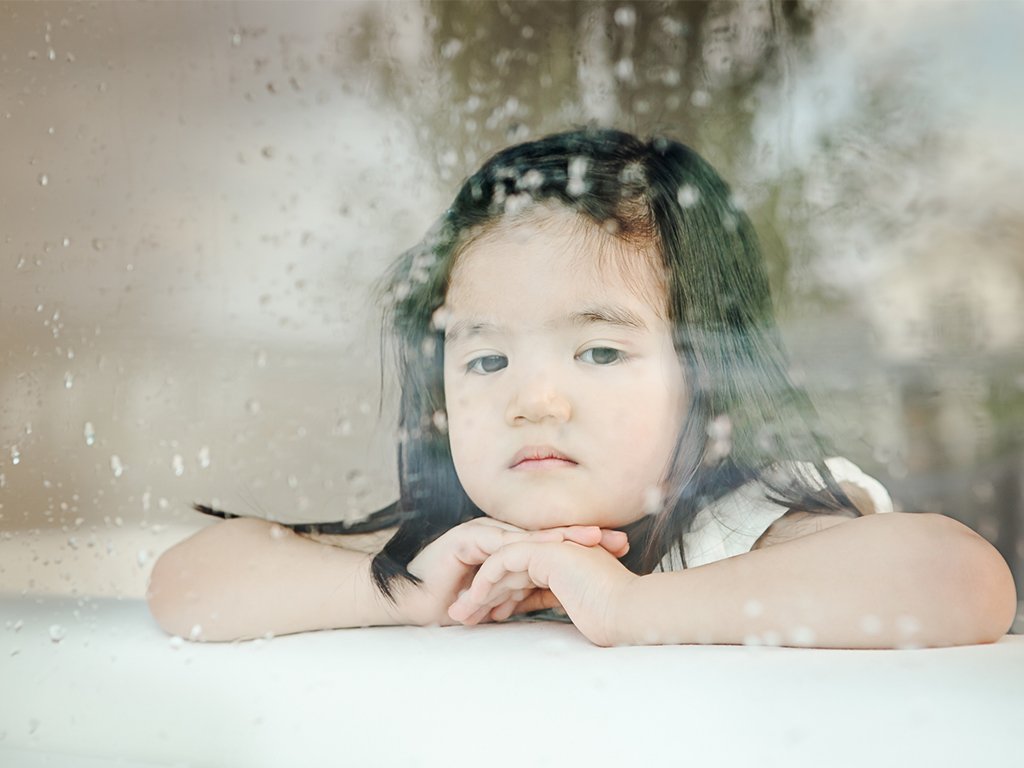In stressful situations, the way adults behave around children either can help or hinder them.
Photo credit: GETTY IMAGES
Every day, children can be exposed to dozens of news stories on TV and social media. These stories can be especially scary when they threaten to hit close to home.
Recent hurricanes and other natural disasters affecting our islands have resulted in the closure of schools and businesses, shaking up our daily routines. Unfortunately, some areas were forced to evacuate due to active lava flow and flooding, and many families were left unable to return home.
Natural disasters like these have the potential to affect keiki and even cause lasting trauma if not dealt with. Learn how to help your children stay resilient when faced with upsetting situations.
The Causes Of Trauma
Childhood trauma occurs when a child experiences a deeply upsetting and intense event. Violence, abuse or neglect, separation from loved ones or natural disasters can all be traumatic.
Hearing about countless earthquakes, tsunamis and hurricanes on the news, then seeing grown-ups prepare for a hurricane warning in real life, can be frightening for a young child. When those natural disasters actually cause evacuations and displace families, children may have a difficult time coping with fear and uncertainty, leading to long-term traumatic effects.
When To Worry About Your Child
Keiki are resilient and sometimes they can recover from trauma without lasting harm. However, they may exhibit physical, emotional and behavioral symptoms that indicate a deeper issue.
Children often experience changes in appetite, refusing to eat once-favorite foods or eating too much or too little, leading to significant weight loss or weight gain. Wetting the bed is another common sign of trauma, especially if it’s unusual for your child.
Note any changes in behavior, such as irritability or anger, excessive worry, anxiety, tantrums, or withdrawing from interests. Children may also become hyper-vigilant, focusing on the safety of themselves and others around them.
When significant changes in behaviors last for a prolonged period of time (three to six months), it may be time to consult with an expert.
How To Help
- Talking with your children can help them process traumatic events. Create a safe environment where children feel like they can come and talk to you about their fears and worries. Turn off your phone and TV and be present during the conversation.
- It’s natural to want to use phrases like “Don’t worry,” or “Everything will be OK,” but this can make your child feel like you are disregarding their feelings. Instead, validate their experience and emotions.
- Support networks help children cope with fear and trauma. Encourage your child to talk about how they’re feeling with grandparents, aunties, uncles, hānai relatives or other adults they have a close relationship with.
- Children are perceptive and take their cues about how to react from those around them. When faced with a scary situation, keep your emotions in check in front of your children. If you remain calm, it will help them feel safer and more in control.
- If your family was displaced by a natural disaster, try to get back to your normal routine as soon as possible. Get your children back to school, eat dinner as a family and try to do the activities you did before the disaster occurred.
- If significant changes in behaviors last for a prolonged period of time, please consult with an expert.
Marie Vorsino is vice president of intervention programs at Parents And Children Together, a leading Hawaiʻi nonprofit providing social services and early childhood education to nurture the relationships that matter most for children and families.
Parents And Children Together is partnering with HONOLULU Family in a series of articles on creating safe and promising futures for Hawaii’s children and families.


